When it comes to teaching young children to read, we could prefer simple materials that won’t bore me to tears. It is a great idea to examine the best books to teach reading.
In our view, these are some of the best books for teaching children to read in a simple and straightforward manner.
This book collection has been collected to help young children with their first attempts at reading and writing. It is not exaggerating to say that learning how to read books has never been more fun, thanks to ABC games, wipe-clean sheets, and rhymes.
Without further ado, let’s just dig into the list.
Wow! I’m Reading! Fun Activities to Make Reading Happen
 Wow! I’m Reading! by Jill Frankel Hauser encourages children to improve their reading skills via hands-on activities. Even the most hesitant readers may be enthralled by games, imaginative play, singing, and arts & crafts projects. It’s a great idea to include this work in your reading list.
Wow! I’m Reading! by Jill Frankel Hauser encourages children to improve their reading skills via hands-on activities. Even the most hesitant readers may be enthralled by games, imaginative play, singing, and arts & crafts projects. It’s a great idea to include this work in your reading list.
Let’s Read: A Linguistic Approach
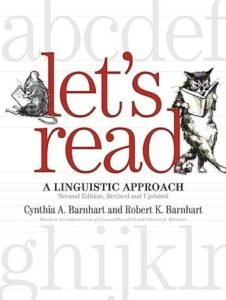 If you’re short on time and don’t want to deal with a slew of preschool phonics books, this is a viable option.
If you’re short on time and don’t want to deal with a slew of preschool phonics books, this is a viable option.
This method groups letters and sounds in the English language based on their frequency. As a result, you may expect a rapid increase in your child’s knowledge. Let’s Read lessons feature reading passages that correspond to the class’s vocabulary subjects.
Wipe-Clean First Spellings: Start School with Topsy and Tim
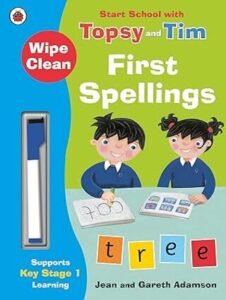 For extra confidence, children may practice writing letters on this brightly colored erasable notepad. When children are initially learning to write, it is vital that they understand that mistakes are normal and even good. The ABCs have never been simpler to learn than they are today.
For extra confidence, children may practice writing letters on this brightly colored erasable notepad. When children are initially learning to write, it is vital that they understand that mistakes are normal and even good. The ABCs have never been simpler to learn than they are today.
The Little Mermaid – Read it yourself with Ladybird
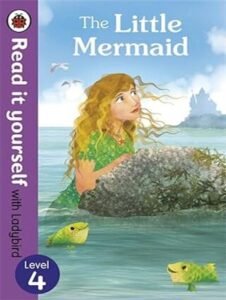 The story of The Little Mermaid appeals to children who can read independently now that they are old enough. This famous fairy tale is sure to pique the interest of young readers while also improving reading comprehension.
The story of The Little Mermaid appeals to children who can read independently now that they are old enough. This famous fairy tale is sure to pique the interest of young readers while also improving reading comprehension.
Children are learning how to read books by exposing them to appealing pictures and high-frequency words. This story is meant to encourage young readers to read more fiction.
Meg and Greg Series
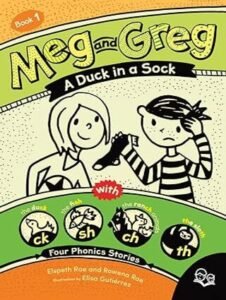 It’s the ideal length, difficulty level, and image/word density per square inch. Each book is divided into chapters. A comic strip appears on every other page. They’re great for families that want their children to read every day but don’t want to spend money on books for learning to read all the time. This is a fantastic series for youngsters in the first through third grades who want to broaden their horizons.
It’s the ideal length, difficulty level, and image/word density per square inch. Each book is divided into chapters. A comic strip appears on every other page. They’re great for families that want their children to read every day but don’t want to spend money on books for learning to read all the time. This is a fantastic series for youngsters in the first through third grades who want to broaden their horizons.
The Ultimate Dick and Jane Storybook Collection
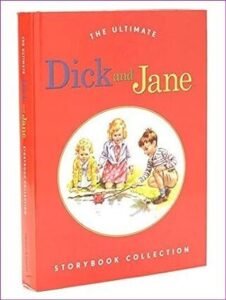 Allow your child to read this book without being put off by its size. Dick and Jane are the main characters in six stories about the lives of siblings and other family members. From 1930 until 1965, the performance was extremely popular in the United States. Each page introduces a new term by using visuals to supplement the text. This book will help your kids to improve their sight words and reading comprehension.
Allow your child to read this book without being put off by its size. Dick and Jane are the main characters in six stories about the lives of siblings and other family members. From 1930 until 1965, the performance was extremely popular in the United States. Each page introduces a new term by using visuals to supplement the text. This book will help your kids to improve their sight words and reading comprehension.
You Read to Me, I’ll Read to You
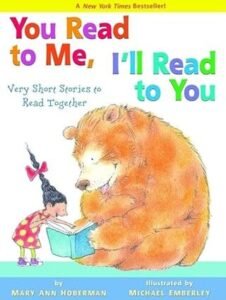 Many of Mary Ann Hoberman’s books include parents and their children reading together to help a young reader acquire the ability to read independently. Using repetition, rhyme, alliteration, and short phrases, this work actively teaches children about short stories, fables, and fairy tales. A parent and child can share the experience of reading a book using this strategy.
Many of Mary Ann Hoberman’s books include parents and their children reading together to help a young reader acquire the ability to read independently. Using repetition, rhyme, alliteration, and short phrases, this work actively teaches children about short stories, fables, and fairy tales. A parent and child can share the experience of reading a book using this strategy.
BOB Books Series
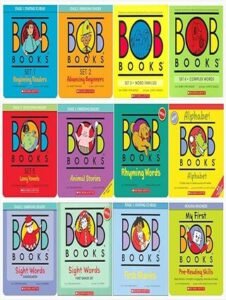 Bobby and John Maslen’s BOB series has become a household name in the field of early literacy teaching. Set 1 book that teaches the alphabet one letter at a time. The sets below contain “sight words” that may be learned through repetition and context suggestions.
Bobby and John Maslen’s BOB series has become a household name in the field of early literacy teaching. Set 1 book that teaches the alphabet one letter at a time. The sets below contain “sight words” that may be learned through repetition and context suggestions.
Usborne Very First Reading
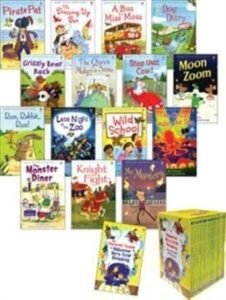
We can use Usborne’s learning how to read books to teach both of my children to read! The fifteen stories featured in this bundle are more intriguing than those found in other beginning reader volumes. It is a gradual process that introduces new noises and challenges. During the latter eight volumes, reading aloud as a pair gradually gives place to the child reading on their own.
Teach Your Child to Read in 100 Easy Lessons
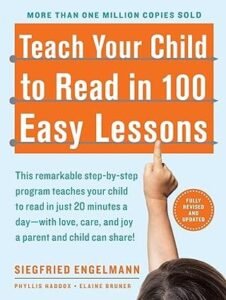 This book is used by many parents to help their children develop a love of reading. Your child will be reading second grade novels by the end of the 100 sessions, which run only 20 minutes every day. Each session contains step-by-step instructions that make the procedure straightforward and stress-free for you as a parent.
This book is used by many parents to help their children develop a love of reading. Your child will be reading second grade novels by the end of the 100 sessions, which run only 20 minutes every day. Each session contains step-by-step instructions that make the procedure straightforward and stress-free for you as a parent.
List of Books on How to Teach Reading Strategies
Reading instruction books come in several formats. Despite their diverse themes, three of the finest books for learning to read follow the same guiding principles. Both Reading with Meaning and Mosaic of Thought emphasize six key tactics for reading literature and building an argument.
The writers claim that pupils would be able to read and comprehend better after reading these books. This skill will help them with reading comprehension on standardized examinations and in school.
The Cafe Book by Gail Boushey and Joan Moser
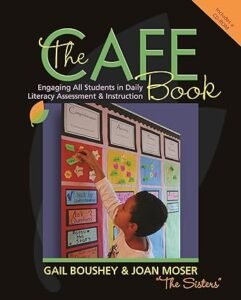 “Fix-Up Strategies,” is a fundamental concept in the book The 7 Keys to Comprehension. What happens when a reader realizes they’ve just read something they’re not sure about? Inquiries, backward reading, and checking up words or phrases in the dictionary are all examples of this.
“Fix-Up Strategies,” is a fundamental concept in the book The 7 Keys to Comprehension. What happens when a reader realizes they’ve just read something they’re not sure about? Inquiries, backward reading, and checking up words or phrases in the dictionary are all examples of this.
The Cafe Book can be a great option to teach an understanding repair techniques. The use of strategy groups and reading conferences in the literacy block is introduced. Despite this, the book’s back matter is its true highlight. Each manner of reading has its own page in the Appendix.
It is vital to have a clear understanding of the strategy’s goal, as well as notes for both teaching and debugging. You’ve come to the correct spot if you’re a reading instructor seeking for a useful cheat sheet. All of my Ready Reference Forms are kept in a section of my reading binder dedicated solely to small groups. More information about my Small Group Reading Binder may be found HERE.
Comprehension from the Ground Up by Sharon Taberski
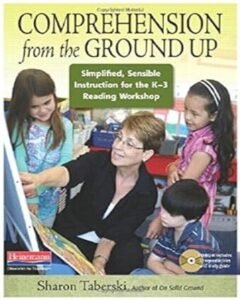 Sharon’s book should not be overlooked! In Reading Workshop, she delves into the what, why, how, and when of comprehension. If you wish to improve your mini-lessons and level books, get this book! There are parts on reading logs and classroom reading time as well. It was both refreshing and motivating to hear about this from someone who uses reading logs in her own school on a regular basis.
Sharon’s book should not be overlooked! In Reading Workshop, she delves into the what, why, how, and when of comprehension. If you wish to improve your mini-lessons and level books, get this book! There are parts on reading logs and classroom reading time as well. It was both refreshing and motivating to hear about this from someone who uses reading logs in her own school on a regular basis.
Here are the reading logs that my class uses to enhance their comprehension skills. What I appreciate most about this book is Taberski’s wealth of writing-related material, ideas, and strategies.
Sharon recounts how she taught character traits to students by using stories such as Kevin Henkes’ Lily’s Purple Plastic Purse. She then used this approach of comprehension to her students’ narrative writing. Many of Sharon’s reading-writing graphic organizers may be found on the accompanying CD. From the Ground Up will provide teachers with plenty of ideas for improving their whole-group mini-lessons, small-group reading sessions, and writing courses.
Mosaic of Thought
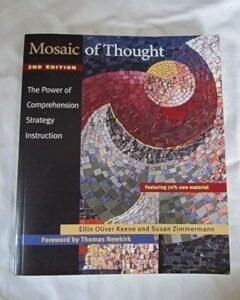 Ellin Oliver Keene and Susan Zimmerman’s “Mosaic of Thought.” They may not have predicted the direction their book’s concept would go when they first authored it. Rather than focusing just on how to improve the reading ability of those who struggle, these authors set out to find the secrets of outstanding readers.
Ellin Oliver Keene and Susan Zimmerman’s “Mosaic of Thought.” They may not have predicted the direction their book’s concept would go when they first authored it. Rather than focusing just on how to improve the reading ability of those who struggle, these authors set out to find the secrets of outstanding readers.
They used the reading technique of a licensed reader. It was amazing to see how these readers handled poetry, essays, and classroom readings. The authors then went on to elaborate on the processes that had developed.
Strategies That Work
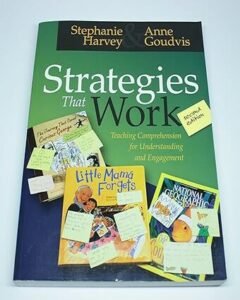 This is Stephanie Harvey’s book about how to enhance understanding via teaching. The author of “Strategies That Work” has vast experience as a reading consultant, elementary school teacher, special education teacher, and special education teacher.
This is Stephanie Harvey’s book about how to enhance understanding via teaching. The author of “Strategies That Work” has vast experience as a reading consultant, elementary school teacher, special education teacher, and special education teacher.
Instructors will profit from this book’s handling of analogous issues, as they did from “Mosaic of Thought.” When reading aloud, far too many readers sound as if they have a firm grasp on the words in front of them. Regardless, they are incapable of reading, comprehending, or elaborating on the text’s content.
The ideas in this book can be used by teachers to help pupils build a personal connection with the words they are understanding. The skills of visualization, inference, and speaking aloud are taught via the use of effective tools. Teachers can present these themes to their students by using the book’s lesson plans and a variety of picture books.
Reading with Meaning
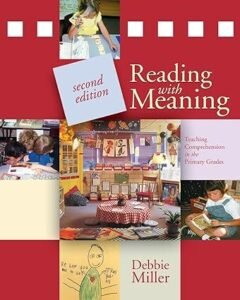 Middle School Comprehension Preparation for Students Debbie Miller is difficult to express in words. Debbie Miller’s classroom is an encouragement to everyone who walks in. There is palpable excitement in the air when children read aloud. Miller explains how she does this in her book. She takes the reader on a year-long journey to teach them how to read on their own.
Middle School Comprehension Preparation for Students Debbie Miller is difficult to express in words. Debbie Miller’s classroom is an encouragement to everyone who walks in. There is palpable excitement in the air when children read aloud. Miller explains how she does this in her book. She takes the reader on a year-long journey to teach them how to read on their own.
The teacher instructions in this book cover everything from assigning reading assignments to leading relevant classroom discussions. Teachers may use these ideas and lesson plans in their classrooms to help students become lifelong readers.
The Reading Strategies Book: Your Everything Guide To Developing Skilled Readers
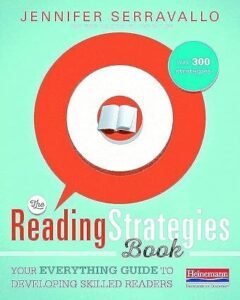 Jennifer Serravallo’s most popular reading approaches are included in The Reading Methods Book. In other words, don’t put this book in your PD bookcase until next year. This is “Your Everything Guide” to teaching your children good reading habits.
Jennifer Serravallo’s most popular reading approaches are included in The Reading Methods Book. In other words, don’t put this book in your PD bookcase until next year. This is “Your Everything Guide” to teaching your children good reading habits.
The Reading Strategies Book provides Fountas & Pinnell-aligned reading goals, reading techniques, prompts, and charts to help teachers improve their students’ reading skills. The book includes reading assignments for kids in grades K-8.
The book helps pre-emergent and emergent readers by teaching fluency and comprehension in fiction and nonfiction, as well as enhancing attention and reading stamina. As a result of reading this book, I’ve been inspired to devise strategies for meeting reading goals. This is the journal I keep on a daily basis. If you’re seeking for information to help your children understand, you can find it here.
Understanding Texts And Readers: Responsive Comprehension Instruction With Leveled Texts
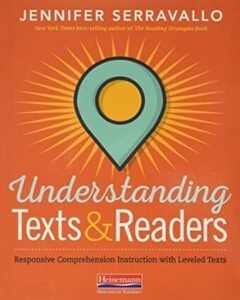 “Understanding Texts and Readers,” a New York Times best-selling book by Jennifer Serravallo, will assist instructors of English as a Second Language (ELA), literacy, and reading. For grades 1–8, the book examines text difficulty, text components, and student understanding requirements.
“Understanding Texts and Readers,” a New York Times best-selling book by Jennifer Serravallo, will assist instructors of English as a Second Language (ELA), literacy, and reading. For grades 1–8, the book examines text difficulty, text components, and student understanding requirements.
These booklets are used to track our student’s progress during the school year. We may acquire a better grasp of what our readers would expect when asked to write on a book they’ve read by evaluating her pupils’ remarks. Another point she makes in her book is that we should assess our students based on their performance rather than their best books to teach reading.
Chart Sense: Common Sense Charts To Teach 3-8 Informational Text and Literature
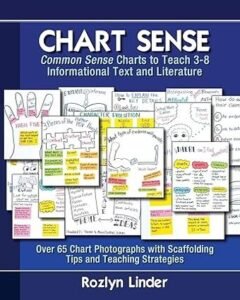 Chart Sense is one of those rare publications that truly helps readers enhance their reading comprehension. Chart Sense, like the other books mentioned here, will be utilized everyday.
Chart Sense is one of those rare publications that truly helps readers enhance their reading comprehension. Chart Sense, like the other books mentioned here, will be utilized everyday.
When Rozlyn Linder teaches reading, she displays the charts she creates with them to her pupils. Even if you’ve previously taught English, this book will help you improve your skills. Each chart provides an introduction, instructional strategies, scaffolding concepts, and grade-level concerns.
This book includes over 60 charts, each with detailed instructions on how to create and use them. This book will be your go-to source for knowledge on a daily basis. Every primary school reading teacher should have access to this material.
The Comprehension Experience by W. Dorsey Hammond and Denise D. Nessel
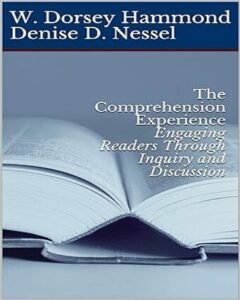 Classroom debate and conversation are sparked through Think, Talk, Teach. As a teacher, if you want your students to be great communicators, you must directly instruct them.
Classroom debate and conversation are sparked through Think, Talk, Teach. As a teacher, if you want your students to be great communicators, you must directly instruct them.
Think Talk Teach is a fantastic resource for teaching spoken language. We believe that the finest comprehension “exercise” we can give our children is to engage them in a small group reading conversation (or during a read-aloud). While teachers may feel their students have discussed the book, they are usually the only ones who do.
Educators can use Hammon and Nessel’s Comprehension Experience to inspire lively debates that teach students to think critically. The writers’ keen views can benefit both students and educators. There is also a comparison and contrast of the debates between instructors and students.
Responding to a teacher’s question does not imply comprehension. Children have mastered the content when they can explain their own thoughts and feelings about what they have learnt. Engage in fascinating discussions with your students to help them develop higher-order thinking skills.
What do you think about the list above?
Please let us know if these best books to teach reading help your children improve their reading comprehension!



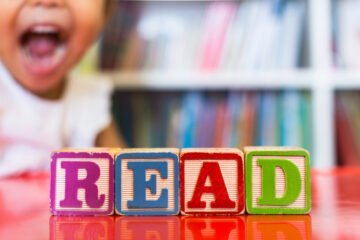
0 Comments